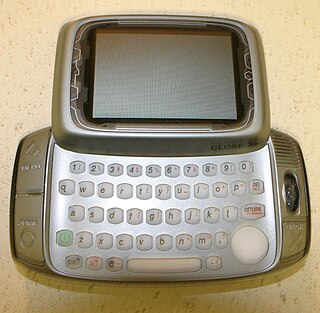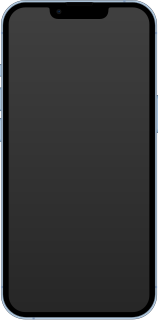
Computing is any goal-oriented activity requiring, benefiting from, or creating computing machinery. It includes the study and experimentation of algorithmic processes, and development of both hardware and software. Computing has scientific, engineering, mathematical, technological and social aspects. Major computing disciplines include computer engineering, computer science, cybersecurity, data science, information systems, information technology and software engineering.

Zilog, Inc. is an American manufacturer of 8-bit and 16-bit microcontrollers. Its most famous product is the Z80 series of 8-bit microprocessors that were compatible with the Intel 8080 but significantly cheaper. The Z80 was widely used during the 1980s in many popular home computers such as the TRS-80, MSX, Amstrad CPC and the ZX Spectrum, as well as arcade games such as Pac-Man. The company also made 16- and 32-bit processors, but these did not see widespread use. From the 1990s, the company focused primarily on the microcontroller market.

A workstation is a special computer designed for technical or scientific applications. Intended primarily to be used by a single user, they are commonly connected to a local area network and run multi-user operating systems. The term workstation has also been used loosely to refer to everything from a mainframe computer terminal to a PC connected to a network, but the most common form refers to the class of hardware offered by several current and defunct companies such as Sun Microsystems, Silicon Graphics, Apollo Computer, DEC, HP, NeXT and IBM which opened the door for the 3D graphics animation revolution of the late 1990s.
In computing, cross-platform software is computer software that is designed to work in several computing platforms. Some cross-platform software requires a separate build for each platform, but some can be directly run on any platform without special preparation, being written in an interpreted language or compiled to portable bytecode for which the interpreters or run-time packages are common or standard components of all supported platforms.
In marketing terminology, a killer application is any computer program or software that is so necessary or desirable that it proves the core value of some larger technology, such as computer hardware, a video game console, software, a programming language, a software platform, or an operating system. In other words, consumers would buy the hardware just to run that application. A killer app can substantially increase sales of the platform on which it runs.

Sibelius is a scorewriter program developed and released by Sibelius Software Limited. It is the world's largest selling music notation program. Beyond creating, editing and printing music scores, Sibelius can also play the music back using sampled or synthesised sounds. It produces printed scores, and can also publish them via the Internet for others to access. Less advanced versions of Sibelius at lower prices have been released, as have various add-ons for the software.

The Danger Hiptop, also re-branded as the T-Mobile Sidekick, Mobiflip and Sharp Jump is a GPRS/EDGE/UMTS smartphone that was produced by Danger, Inc. from 2002 to 2010.
Software bloat is a process whereby successive versions of a computer program become perceptibly slower, use more memory, disk space or processing power, or have higher hardware requirements than the previous version, while making only dubious user-perceptible improvements or suffering from feature creep. The term is not applied consistently; it is often used as a pejorative by end users (bloatware) to describe undesired user interface changes even if those changes had little or no effect on the hardware requirements. In long-lived software, perceived bloat can occur from the software servicing a large, diverse marketplace with many differing requirements. Most end users will feel they only need some limited subset of the available functions, and will regard the others as unnecessary bloat, even if end users with different requirements require those functions.
An application program is a computer program designed to carry out a specific task other than one relating to the operation of the computer itself, typically to be used by end-users. Word processors, media players, and accounting software are examples of. The collective noun “application software” refers to all applications collectively. The other principal classifications of software are system software, relating to the operation of the computer, and utility software ("utilities").

Inferno is a distributed operating system started at Bell Labs and now developed and maintained by Vita Nuova Holdings as free software under the MIT License. Inferno was based on the experience gained with Plan 9 from Bell Labs, and the further research of Bell Labs into operating systems, languages, on-the-fly compilers, graphics, security, networking and portability. The name of the operating system, many of its associated programs, and that of the current company, were inspired by Dante Alighieri's Divine Comedy. In Italian, Inferno means "hell", of which there are nine circles in Dante's Divine Comedy.
2005 saw the release of many sequels and prequels in video games, such as Resident Evil 4, Brothers in Arms: Road to Hill 30, Devil May Cry 3: Dante's Awakening, Mario Kart DS, Mario & Luigi: Partners in Time, Need for Speed: Most Wanted, and Prince of Persia: The Two Thrones, alongside prominent new releases including Brain Age, F.E.A.R., Forza Motorsport, God of War, Guitar Hero, Nintendogs, Shadow of the Colossus, and Sniper Elite. The seventh generation of video game consoles also began with the launch of the Xbox 360, while the Nintendo DS launched in PAL regions.

Kodi is a free and open-source media player software application developed by the XBMC Foundation, a non-profit technology consortium. Kodi is available for multiple operating systems and hardware platforms, with a software 10-foot user interface for use with televisions and remote controls. It allows users to play and view most streaming media, such as videos, music, podcasts, and videos from the Internet, as well as all common digital media files from local and network storage media.

In computer science, hierarchical protection domains, often called protection rings, are mechanisms to protect data and functionality from faults and malicious behavior.
Google Store is a hardware retail store operated by Google, that sells Google Pixel devices, Google Nest products, Stadia, Chromecast dongles, Fitbit devices, and accessories such as earbuds, phone cases, chargers, and keyboards. It also sold Nexus, Daydream, and Cardboard devices until their discontinuations. Google Store sells products made by Google or made in collaboration with that company. It was introduced on March 11, 2015, and replaced the Devices section of Google Play as Google's hardware retailer. It is overseen by Ana Corrales, who is also the COO of Google's Devices & Services division.

Linux is a family of open-source Unix-like operating systems based on the Linux kernel, an operating system kernel first released on September 17, 1991, by Linus Torvalds. Linux is typically packaged in a Linux distribution.

The iPhone is a line of smartphones designed and marketed by Apple Inc. These devices use Apple's iOS mobile operating system. The first-generation iPhone was announced by then-Apple CEO Steve Jobs on January 9, 2007. Since then, Apple has annually released new iPhone models and iOS updates. As of November 1, 2018, more than 2.2 billion iPhones had been sold.

The Wii system software is a discontinued set of updatable firmware versions and a software frontend on the Wii home video game console. Updates, which could be downloaded over the Internet or read from a game disc, allowed Nintendo to add additional features and software, as well as to patch security vulnerabilities used by users to load homebrew software. When a new update became available, Nintendo sent a message to the Wii Message Board of Internet-connected systems notifying them of the available update.
In computing, virtualization or virtualisation is the act of creating a virtual version of something at the same abstraction level, including virtual computer hardware platforms, storage devices, and computer network resources.

A feature phone is a type or class of mobile phone that retains the form factor of earlier generations of mobile telephones, typically with press-button based inputs and a small non-touch display. They tend to use an embedded operating system with a small and simple graphical user interface, unlike large and complex mobile operating systems such as Android from Google or iOS from Apple. Their functions are limited compared to smartphones, which integrate the phone with an internet communications device. Feature phones typically provide voice calling and text messaging functionality, as well as basic multimedia and internet capabilities, and other services offered by the user's mobile network operator. The hardware of feature phones often include a backlit liquid-crystal display (LCD) screen, a hardware notification LED, a micro USB port, a physical keyboard, a microphone, a microSD card slot, a rear-facing camera to record video and capture pictures, and GPS services. Some feature phones include a rudimentary app store that includes basic mobile apps such as a calendar, calculator, mobile web, and mobile games.

A virtual reality game or VR game is a video game played on virtual reality (VR) hardware. Most VR games are based on player immersion, typically through head-mounted display unit or headset and one or more controllers. The headset typically provides two stereoscopic displays in front of the user's eyes to simulate a 3D space.












